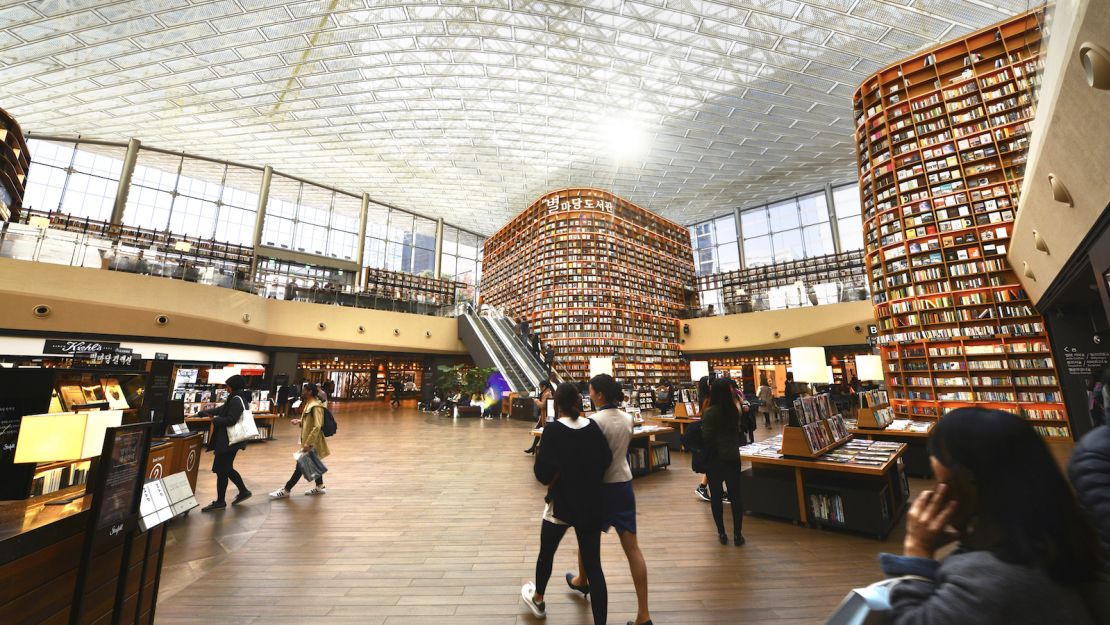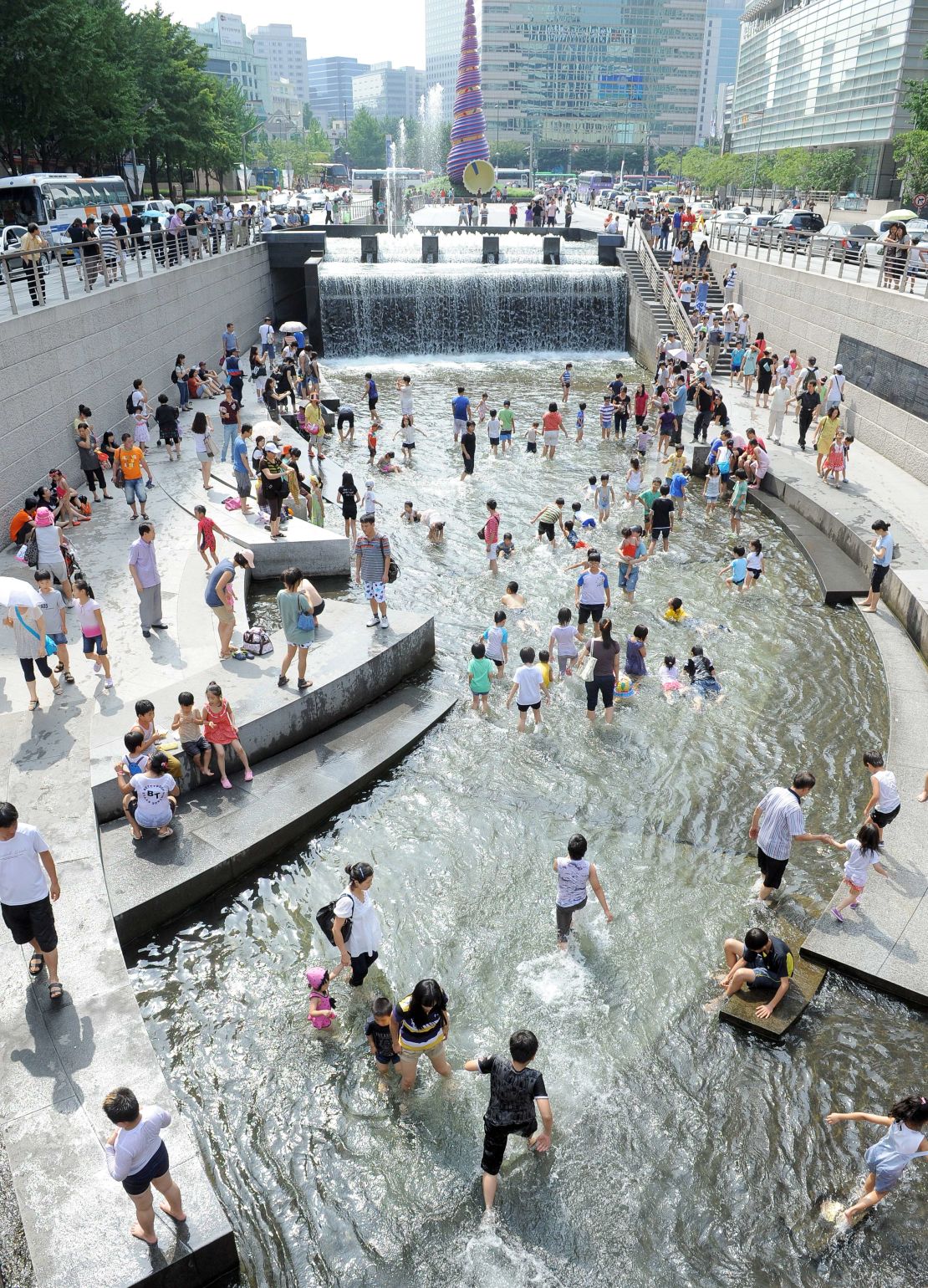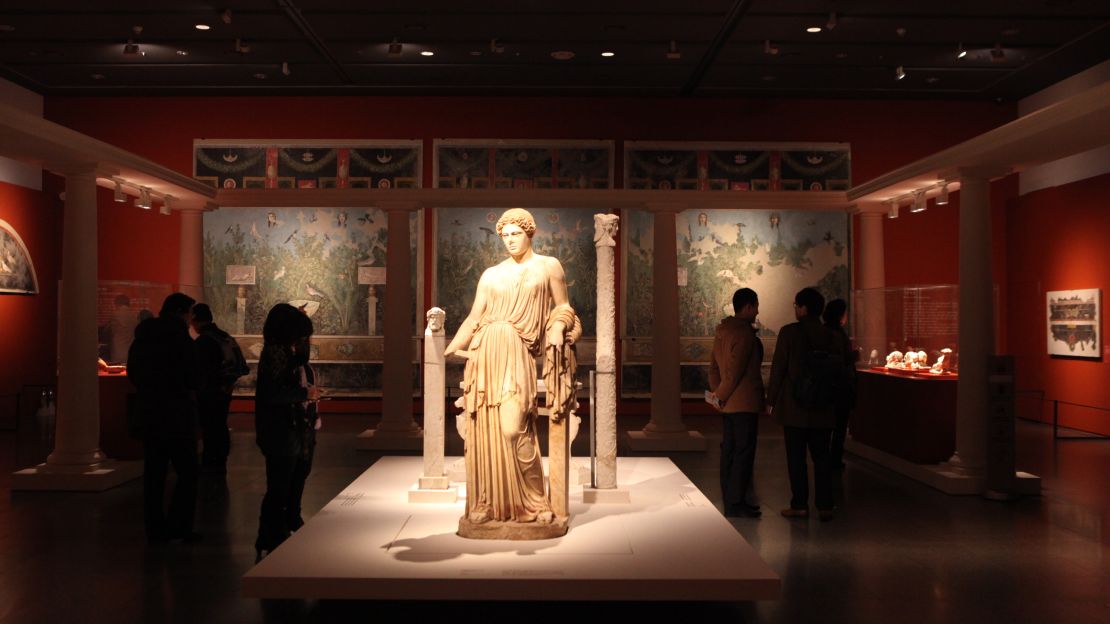Thanks to world-beating internet speeds that are only getting faster – and plans to launch 5G service in 2019 – South Korea is one of the most well-connected countries in the world.
These days you can find free Wi-Fi just about anywhere you travel in Seoul.
“I think there’s a certain DNA to the Korean people,” says Keith Kim, founder of travel site Seoulistic.com. “They embrace new. They embrace everything that will advance.”
All this of course poses a challenge for the government – how to convince connected citizens of the need to go offline and relax every once in a while?
According to state data, on average, smart phone users are playing games, tweeting or chatting for four hours a day.
Hoping to bring back some balance, the government recently shifted its focus to cultural spaces, creating quiet havens around Seoul. (More on this in the above video.)
Meanwhile, from 2012 to 2016, 197 new green spaces were created in the city’s downtown core.
These complement an already massive roster of museums and attractions impressive enough to persuade travelers to shut down their screens for a while as well.
Here are a few of our favorites, all of which can be experienced on a Seoultastic tour.
Starfield Library

One of Seoul’s newest attractions, the dramatic Star Field Library sits inside Starfield COEX, the world’s largest underground shopping mall.
The two-story library is free of charge to anyone.
Filling a space of 2,800 square meters, it consists of three giant 13-meter (42 feet) bookshelves packed with approximately 50,000 books and magazines.
“This is one of the building blocks of the future, to have buildings like this,” says Kim. “They’re going to be popping up all over.”
Not only does Starfield Library provide comfortable reading space to its visitors, but it also offers a variety of monthly cultural events and performances with different themes on a daily basis.
Starfield Library, Starfield COEX Mall, Yeongdong-daero, Gangnam-gu, Seoul, South Korea
War Memorial of Korea
With a 5,000-year history, Korea has certainly seen its share of wars and that’s precisely why the War Memorial of Korea has an extensive array of stories and artifacts.
The museum, which is located on the old site of army headquarters, has two main exhibitions.
The indoor exhibition includes six halls. The first is a Memorial Hall, which pays tribute to all those who have fought in Korean wars and lost their lives.
The next room is the War Room, featuring Korean weapons from as early as the Paleolithic age, armor and helmets used throughout different periods, as well as swords and other Korean weaponry used over the centuries.
Also indoors is a whole exhibit dedicated to just the Korean War of the 1950s. Beginning with North Korea’s surprise invasion of the South on June 25, 1950, this hall depicts all aspects of the war, such as the role of the United Nations played and what wartime life was like for Koreans.
The Outdoor Exhibition features restored tanks, vehicles, submarines, aircraft and artillery that were used in World War II, the Korean War and the Vietnam War. But more than just standing right next to these mega machines, you can actually get inside them.
Admission to the museum is free.
War Memorial of Korea, 29 Itaewon-ro, Namyeong-dong, Yongsan-gu, Seoul, South Korea; +82 2 709 3139
Cheonggyecheon Stream

Once called “Gaecheon,” or “open stream,” Seoul’s Cheonggyecheon Stream was covered with concrete in 1958, then completely buried under a highway, which was completed in 1976.
But in 2005, thanks to an aggressive revitalization effort, the waters of Cheonggyecheon were returned to their former glory. Today, it’s a popular spot for Seoulites eager for a break from the asphalt world that often surrounds them.
The park is large, while Cheonggyecheon’s main pedestrian thoroughfare is 5.3 kilometers long.
With its waterfalls, stone bridges, vegetation and flowerbeds, the area provides a welcome respite for office workers, students and tourists. At night, it transforms into a romantic venue with colorful beams of lights shooting through waterfalls and bridges.
Various performances and cultural events are hosted here as well.
Thinking of visiting? Seoulistic.com offers a few tips.
“It’s most crowded at the Cheonggyechon Steam Plaza,” says the travel site’s advice. “Walk further down for fewer crowds.”
Also, “it’s most beautiful in early evening when the dusk is setting and the night lights are starting to come in.”
The Seoul Tourism Organization offers free guided walking tours of the Cheonggyecheon Stream, which can be booked on their website.
National Museum of Korea

The National Museum of Korea originally opened in 1945, the same year Korea gained independence from Japan. Since then, it’s moved to various locations until October 2005, when it was given its final and current setting in Yongsan Family Park.
It houses more than 220,000 pieces of art and relics in total, some 13,000 of which are on display at any given time. The best way to explore this behemoth? Compartmentalizing.
Tackle the museum one floor at a time, beginning at the first floor, which contains an archeological and historical gallery. Here you can browse artifacts dating all the way back to 1392, representing the earliest days of Korean civilization.
The second floor is where you will find calligraphy and paintings, as well as donated works from individual collectors.
On the third floor prepare to find yourself surrounded by beautiful Buddhist sculptures, ceramics and art representing Asian culture.
National Museum of Korea, Yongsan-dong 6-ga 168-6 (Seobinggo-ro 137), Yongsan-gu
Tey-Marie Astudillo, Rachel Sang-hee Han, Frances Cha and Karla Cripps contributed to this feature.









